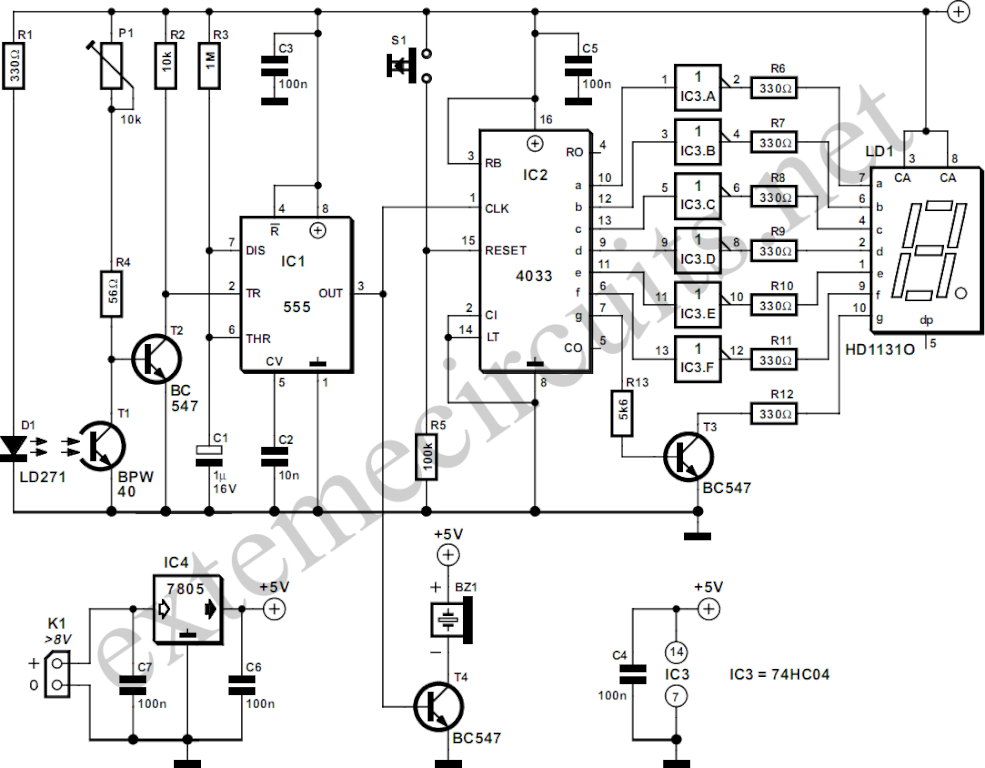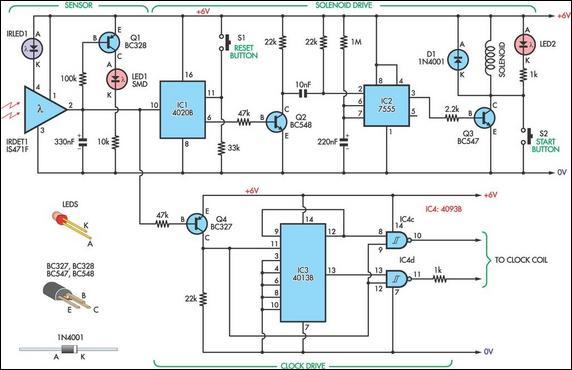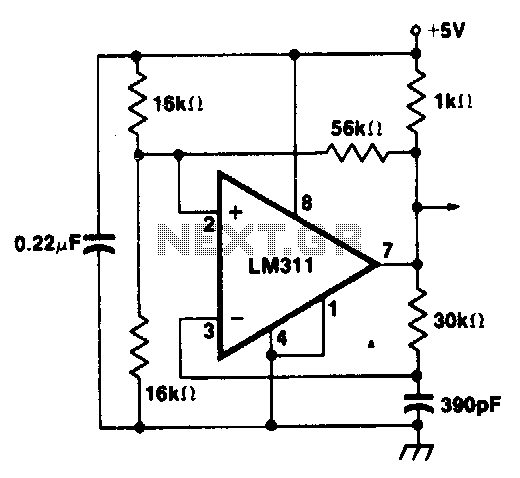
LCD CLOCK USING 8051 (89s51) Microcontroller

This project implements a real-time clock using the 89C51 microcontroller. The clock's data format is hours:minutes:seconds, which is displayed on a 16x2 LCD. The code has been tested and compiled using the Keil uVision compiler. The circuit diagram for the project is provided below.
The real-time clock circuit utilizes the 89C51 microcontroller, which is a popular 8-bit microcontroller from the 8051 family. This microcontroller is chosen for its ease of use and compatibility with various peripherals. The primary function of this circuit is to keep track of time, displaying it in the format of hours, minutes, and seconds.
The 16x2 LCD, a commonly used display module, serves as the output interface for the clock. It is capable of displaying two lines of text, with each line containing up to 16 characters. The LCD is connected to the microcontroller via a parallel interface, typically utilizing pins for data transmission and control signals. The microcontroller sends the time data to the LCD in a format that the display can interpret and render visually.
The circuit also includes a crystal oscillator, which provides the necessary clock signal for the microcontroller to function accurately. The frequency of the crystal is typically 11.0592 MHz, which is standard for many 8051 applications. This frequency ensures that the microcontroller operates reliably and maintains precise timing.
In addition to the microcontroller and LCD, the circuit may include passive components such as resistors and capacitors for debouncing switches or stabilizing power supply levels. A power supply circuit is also essential, often utilizing a voltage regulator to ensure that the microcontroller and other components receive a stable voltage.
The software code, developed and tested in the Keil uVision compiler, handles the initialization of the microcontroller, configures the LCD for display, and implements the logic for timekeeping. It uses timers and interrupts to manage the passage of time accurately. The code is structured to update the display every second, ensuring that the time shown is current.
Overall, this real-time clock project effectively demonstrates the integration of microcontroller technology with display systems, showcasing fundamental principles of electronics and embedded systems design.This is a real time clock by using 89c51 micro-controller, clock`s data format is hour:min:sec, and it is displayed on 16x2 LCD, the code has been tested and compilled on Keil uVision compiler, circuit diagram for the project is shown below. 🔗 External reference
The real-time clock circuit utilizes the 89C51 microcontroller, which is a popular 8-bit microcontroller from the 8051 family. This microcontroller is chosen for its ease of use and compatibility with various peripherals. The primary function of this circuit is to keep track of time, displaying it in the format of hours, minutes, and seconds.
The 16x2 LCD, a commonly used display module, serves as the output interface for the clock. It is capable of displaying two lines of text, with each line containing up to 16 characters. The LCD is connected to the microcontroller via a parallel interface, typically utilizing pins for data transmission and control signals. The microcontroller sends the time data to the LCD in a format that the display can interpret and render visually.
The circuit also includes a crystal oscillator, which provides the necessary clock signal for the microcontroller to function accurately. The frequency of the crystal is typically 11.0592 MHz, which is standard for many 8051 applications. This frequency ensures that the microcontroller operates reliably and maintains precise timing.
In addition to the microcontroller and LCD, the circuit may include passive components such as resistors and capacitors for debouncing switches or stabilizing power supply levels. A power supply circuit is also essential, often utilizing a voltage regulator to ensure that the microcontroller and other components receive a stable voltage.
The software code, developed and tested in the Keil uVision compiler, handles the initialization of the microcontroller, configures the LCD for display, and implements the logic for timekeeping. It uses timers and interrupts to manage the passage of time accurately. The code is structured to update the display every second, ensuring that the time shown is current.
Overall, this real-time clock project effectively demonstrates the integration of microcontroller technology with display systems, showcasing fundamental principles of electronics and embedded systems design.This is a real time clock by using 89c51 micro-controller, clock`s data format is hour:min:sec, and it is displayed on 16x2 LCD, the code has been tested and compilled on Keil uVision compiler, circuit diagram for the project is shown below. 🔗 External reference





